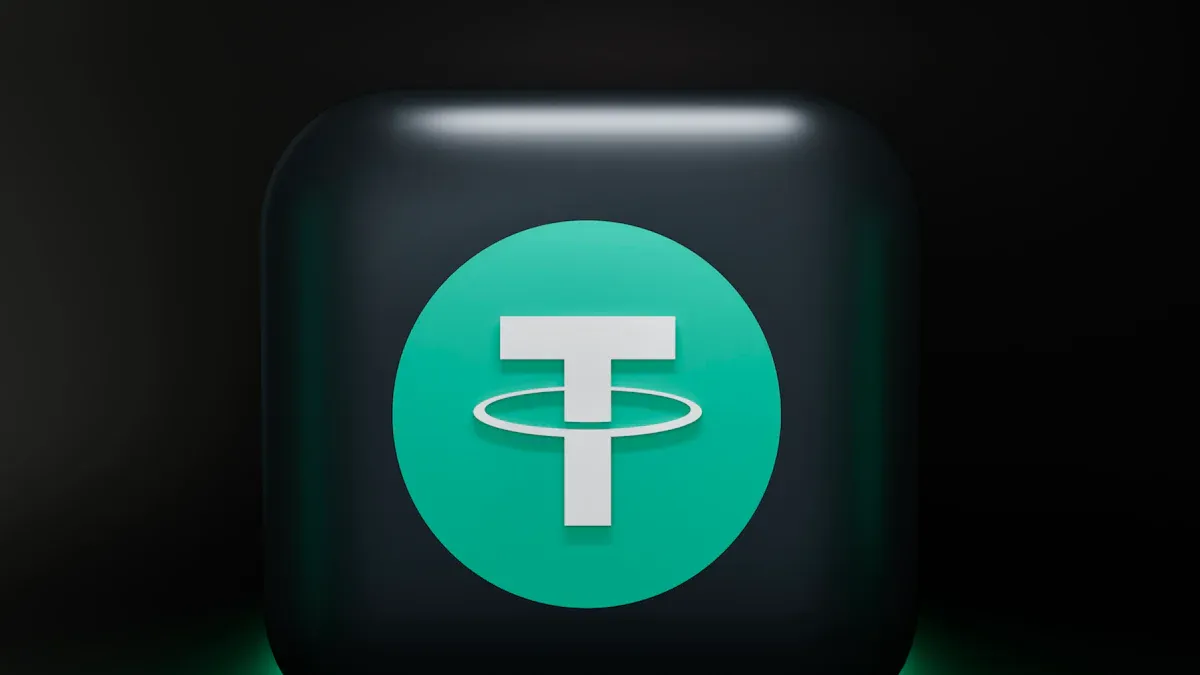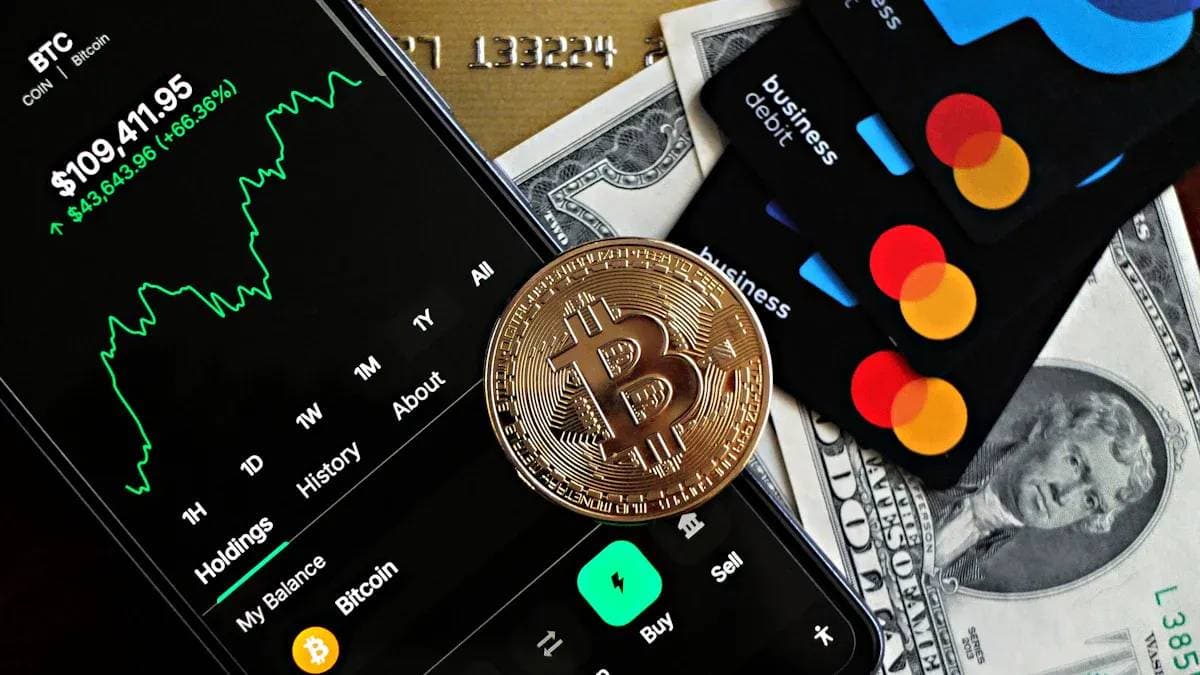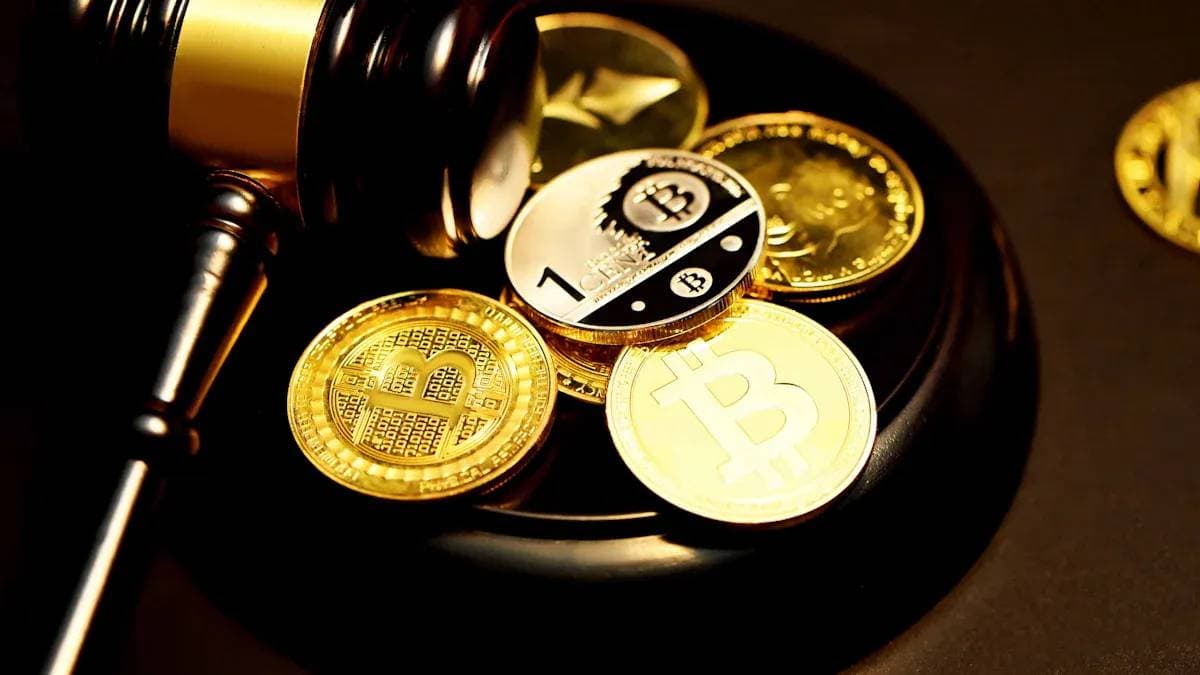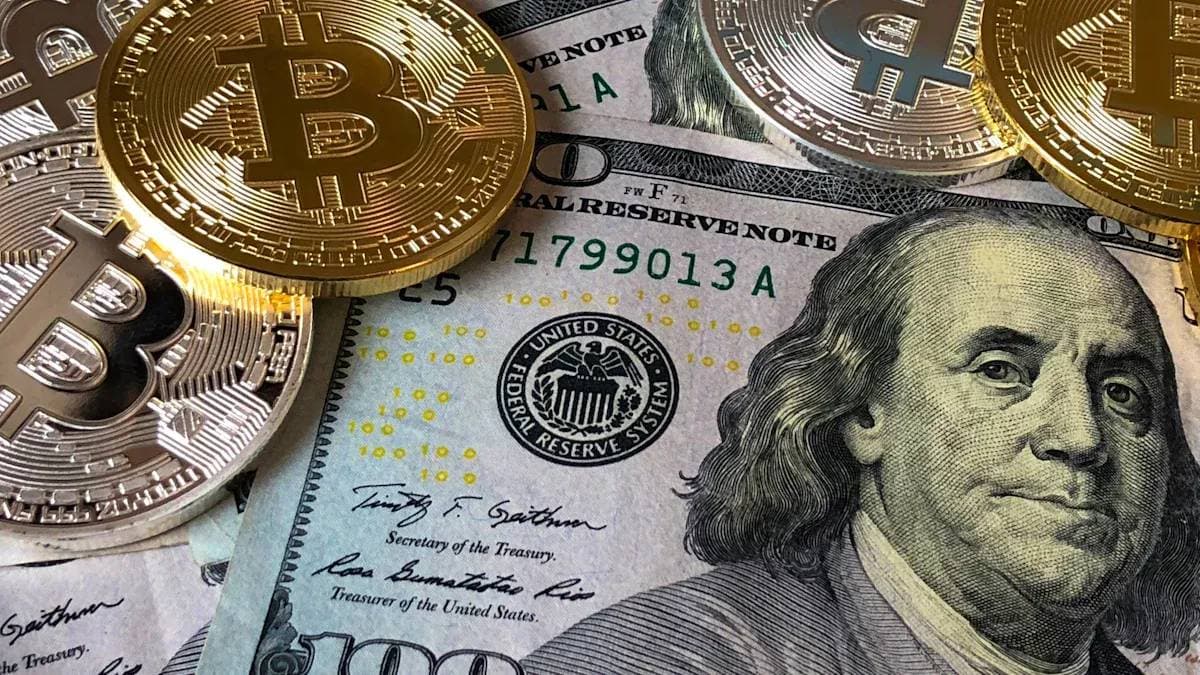- EasyCard
- Trade
- Help
- Announcement
- Academy
- SWIFT Code
- Iban Number
- Referral
- Customer Service
- Blog
- Creator
Complete Guide to USDT Remittances: How to Achieve Second-Level Cross-Border Payments

Image Source: pexels
You can imagine USDT as a “global version of Alipay”. It uses blockchain technology, completely bypassing traditional bank clearing systems. This means stablecoin USDT international remittances no longer need to wait lengthy days.
| Transfer Type | Average Processing Time |
|---|---|
| Traditional SWIFT Wire | 3 to 7 business days |
| USDT Transfer | Usually completes in a few minutes |
USDT’s strength is not to be underestimated. Its daily trading volume often exceeds 128 billion USD, its huge market scale and liquidity making it an efficient global payment tool.
Key Points
- USDT remittances are fast and low-cost. They do not go through banks, allowing 7x24 transfers anytime.
- Choosing TRC20 network for USDT transfers is fastest and cheapest. Its transaction speed is fast, handling fees very low.
- Before transferring USDT, carefully verify recipient address and network type. Address or network errors cause permanent fund loss.
- Acquire USDT from safe, reliable platforms. Enabling two-factor authentication protects your account security.
- USDT not only for remittances but also daily consumption and commercial payments. It is changing global payment methods.
Speed Advantages and Core Principles of USDT Remittances
Think of USDT as “global Alipay”, and you understand its core advantages. It does not rely on traditional banks, on standby 7x24, allowing funds to flow globally at high speed. This completely changes our perception of cross-border payment speed and cost.
Time Comparison: Minute-Level vs. Day-Level
Have you experienced the anxiety of waiting days for an international remittance? Traditional SWIFT wire systems usually take 1 to 5 business days to process a transaction. This is because funds pass through multiple intermediary banks for clearing, affected by bank hours and holidays.
USDT is completely different. When using TRC20 network to send USDT, transaction confirmation time is usually less than 1 minute. This means your funds can almost instantly reach the recipient, achieving a leap from “day-level” to “minute-level”.
Cost Comparison: Near Zero-Fee Possibility
Traditional wire costs include not only fixed fees but hidden exchange rate spreads. Banks usually add 2% to 3% premium on exchanges. This means for a $1,000 remittance, exchange losses alone may reach $20 to $30.
Stablecoin USDT international remittance cost structure is completely different. Its main fee is the “miner fee” (Gas Fee) paid to the blockchain network, unrelated to your remittance amount. Whether transferring $100 or $100,000, network fees are basically fixed, especially on efficient networks, costs extremely low.
Network Selection: Why TRC20 Is Speed Preference
Choosing the correct blockchain network is key to achieving second-level payments and low costs. Currently, mainstream networks carrying USDT include Ethereum (ERC20) and TRON (TRC20). For users pursuing speed and low cost, TRC20 is the clear preference.
| Feature | TRC20 USDT (TRON) | ERC20 USDT (Ethereum) |
|---|---|---|
| Typical Fee | $1 - $2 | $5 - $50 |
| Transaction Speed | 3-5 seconds | 35-60 seconds |
TRC20 advantages stem from its underlying technology. TRON network uses Delegated Proof of Stake (DPoS) consensus, processing about 2,000 transactions per second (TPS). In contrast, Ethereum network processes about 15-30 per second. Higher capacity means less congestion and faster confirmations, ultimately better transfer experience.
Stablecoin USDT International Remittances: Four-Step Practical Guide

Image Source: pexels
After mastering USDT core advantages, you can start actual operations. The entire process decomposes into four simple clear steps. As long as you carefully follow this guide, you can safely and efficiently complete a second-level cross-border payment.
Step One: Safely Acquire USDT
To initiate a transfer, you first need USDT. Channels for acquiring USDT mainly divide into two: centralized platforms and P2P (peer-to-peer) markets.
1. Purchase via Compliant Platforms
For beginners, choosing a safe and user-friendly platform is crucial. Such platforms usually support direct USDT purchase with credit cards or bank transfers.
For example, platforms like Biyapay provide a simplified purchase process; you can use funds from your licensed Hong Kong bank account via partnered channels to exchange for USDT. When choosing, security and usability are primary considerations. A trustworthy platform usually has strong network security practices and widespread global user recognition.
Besides Biyapay, other excellent platforms include:
- MEXC: Suitable for small instant purchases, credit card payment fees below 4%.
- Bybit: Suitable for large purchases, conversion fee discounts when over $1,500.
- BingX: Suitable for euro deposits, fiat deposit fees as low as 0.1%.
2. Trade via P2P Markets
P2P markets connect individual buyers and sellers, allowing direct USDT purchase with local payment methods.
- Binance P2P: Has huge user base and over 700 payment methods, escrow ensures transaction security, no trading fees.
- KuCoin P2P: Known for friendly UI and strict KYC processes, minimizing fraud risks.
- Paxful: Supports over 350 payment methods, including gift cards, mobile payments; rating system helps find trustworthy counterparts.
Security Tip: EnableTwo-Factor Authentication (2FA) Regardless of platform, immediately enable two-factor authentication (2FA). It adds a critical protection layer. Even if someone gets your password, without your phone’s code, they cannot access assets. This is indispensable for fund security.
Step Two: Verify Recipient Address and Network
This is the most error-prone and critical step. Once wrong, funds permanently lost.
USDT exists on different blockchain networks, most common TRC20 (TRON) and ERC20 (Ethereum). You must ensure your chosen network exactly matches the recipient’s address network.
A simple distinction method is checking address start:
| Address Type | Starting Characters | Network | Example |
|---|---|---|---|
| TRC20 | T | TRON | TPAj9j3o4u5v6w7x8y9zAbCdEfGhIjKlMn |
| ERC20 | 0x | Ethereum | 0x1a2b3c4d5e6f7g8h9i0j1k2l3m4n5o6p7q8r |
Operation Iron Rule: Copy-Paste, Repeated Verification Never manually input wallet addresses. Directly copy the full address provided by recipient. After pasting to transfer page, verify first and last characters match original exactly. Recommend wallets like imToken supporting multi-chain, helping clearly manage different network assets, reducing error risks.
Step Three: Initiate Transfer and Confirm
After verification, initiate transfer.
- In your wallet or exchange app, select “transfer” or “withdraw” function.
- Paste the just-verified recipient address.
- Select correct network; for pursuing speed and low cost in stablecoin USDT international remittances, recommend TRC20.
- Enter transfer amount, then confirm transaction.
After submission, it broadcasts to blockchain awaiting confirmation. You can track transaction status in real-time via blockchain explorer.
How to Query Your Transaction?
- Find Transaction ID (TxID): After transfer, platform provides a unique transaction ID, also called transaction hash.
- Open Explorer: For TRC20 network, visit official blockchain explorer
tronscan.org. - Enter TxID: Paste your TxID in search box and search.
- View Status: Page shows detailed info, including confirmations and final status (like “SUCCESS”). Usually, transactions confirm in a few minutes.
Step Four: Receipt and Local Cash-Out
Once transaction confirmed on blockchain, recipient sees this USDT in their wallet. At this point, cross-border fund transfer completes.
If recipient needs to exchange USDT for local fiat (e.g., USD), they can reverse Step One:
- Via P2P market, sell USDT to individual buyers, receive local currency payments.
- On centralized platforms, sell USDT, then withdraw funds to bound bank accounts, e.g., to licensed Hong Kong bank accounts.
Important Reminder: Tax Compliance Note that exchanging cryptocurrency for fiat usually incurs tax liabilities. In US markets, cryptocurrency treated as property. When selling USDT for USD, calculate capital gains or losses.
- Taxable Event: Difference between sale price and purchase cost, report as capital gain or loss.
- Tax Rates: Held less than one year taxed at ordinary income rates; over one year enjoys lower long-term capital gains rates.
- Reporting: In US, use Form 8949 and Schedule D to report. Consult professional tax advisors to ensure local compliance.
Key Risks and Security Operation Essentials
Though USDT remittances efficient, operational risks cannot be ignored. Understanding and avoiding these is prerequisite for safe use. Below are three key risk points you must master.
Risk One: Consequences of Address-Network Mismatch
This is the fatal error most common for newcomers. If sending TRC20 network USDT to an ERC20 address, funds usually permanently lost. Different blockchain networks do not directly interoperate.
Though rare exchanges or professional services may attempt recovery, success not guaranteed. For example, some advanced cross-chain tech in specific scenarios (EVM to EVM) recovery rates up to 87%, but not universal. Never rely on post-remedies.
Operation Bottom Line: Before transfer, confirm with recipient if address and network type exactly match.
Risk Two: Slight USDT Price Fluctuations
USDT called stablecoin because 1:1 pegged to USD. But “stable” not “constant”. In past year, USDT to USD rate had about 0.03% minor changes.
This stability confidence mainly from its strong reserve assets. Per latest report, Tether holds about 135 billion USD in US Treasuries, making it one of largest US government debt holders. Additionally, reserves include gold and Bitcoin diversified assets, jointly supporting USDT value. For daily remittances, this minor fluctuation impact negligible.
Risk Three: Trading Platform and Counterparty Selection
Your fund security also depends on chosen platform and counterparties.
- Choose Platforms: Prioritize those with strict security measures. Check if they provide two-factor authentication (2FA), data encryption, compliance with AML and KYC regulations.
- P2P Trading: In peer-to-peer, beware scams. For example, scammers send fake payment screenshots (fake receipt scams), or impersonate support to trick operations.
Security Guideline: Always complete transactions within platform, and never release USDT before personally confirming your bank account or wallet received payment.
Beyond Remittances: Future and Extended Applications of USDT Payments

Image Source: unsplash
USDT not only changes remittances but reshapes how we interact with digital funds. Its applications extend beyond simple peer-to-peer transfers to broader financial scenarios.
Institutional Integration: Payment Giants Entering
When mainstream financial institutions adopt a technology, you know it is becoming mainstream. Stablecoin payments have gained industry giant recognition.
A typical example is global remittance company MoneyGram. It partnered with Stellar blockchain and Circle (USDC issuer) to launch stablecoin remittance services.
This service lets users deposit cash into a USD stablecoin-backed digital account, then spend globally via associated Visa or Mastercard. This marks traditional finance actively embracing stablecoin efficiency and convenience.
Direct Consumption: From Remittances to Daily Payments
Imagine receiving USDT and directly using it for coffee or online shopping without exchange. This is reality via cryptocurrency debit cards.
Many platforms now offer crypto cards partnered with Mastercard or Visa, allowing direct USDT spending from wallets.
- Bybit Card: A Mastercard debit card for easy USDT and other crypto spending.
- Wirex Card: Operates in over 130 countries, supports direct USDT payments.
- BitPay Card: Allows direct USDT spending at major retailers.
Usage is simple. In associated app, top up card with USDT. Once done, use like any ordinary bank card, swipe anywhere accepting Mastercard or Visa.
Programmability: New Possibilities from Smart Contracts
USDT’s true revolutionary potential lies in programmability. Via smart contracts on TRON or Ethereum networks, create automated, rule-based payments.
Smart contracts are self-executing programs; once preset conditions met, automatically complete transactions. This brings new possibilities for commercial payments. For example, set a contract to automatically pay USDT to supplier upon confirmed goods delivery.
The entire automation flow:
- Initiate Request: Submit payment request via app.
- Network Verification: Blockchain verifies transaction per rules.
- Instant Settlement: Funds transfer from your wallet to theirs in seconds.
- Permanent Record: Transaction recorded on immutable ledger, viewable by all authorized parties.
This programmability makes fund flows smarter, more transparent, and efficient.
Stablecoin USDT international remittance core value lies in unmatched speed, low cost, and high convenience. It is not only a strong supplement to traditional remittances but foreshadows future cross-border payment direction. Predictions show stablecoin market scale in optimistic scenario may approach 5 trillion USD by 2030, showing huge potential.
Security First: Always start with small tests. Make “repeatedly verify address and network” your unshakable first rule; this is key to protecting funds. Grasping new-generation financial tool opportunities positions you ahead in future global payments.
FAQ
Is USDT legal and safe?
USDT legality depends on your region’s regulations. Its value backed by reserve assets. For you, security key is choosing reputable platforms and always enabling two-factor authentication (2FA) to protect accounts.
Is there a minimum amount for USDT remittances?
USDT transfers themselves have no minimum. But platforms you use usually set minimum withdrawal amounts, e.g., $5 or $10. Check specific platform rules before initiating.
What if the recipient has no crypto wallet?
Recipient must have a crypto wallet. Guide them to download mainstream wallet apps like imToken. Creating a wallet is simple, taking minutes to get a receiving address.
Besides TRC20, can I use other networks?
Yes. USDT also supports ERC20 (Ethereum), etc. But TRC20, with extremely low fees and faster speeds, is best for daily remittances. Regardless, ensure network matches recipient.
*This article is provided for general information purposes and does not constitute legal, tax or other professional advice from BiyaPay or its subsidiaries and its affiliates, and it is not intended as a substitute for obtaining advice from a financial advisor or any other professional.
We make no representations, warranties or warranties, express or implied, as to the accuracy, completeness or timeliness of the contents of this publication.




Contact Us
Company and Team
BiyaPay Products
Customer Services
BIYA GLOBAL LLC is a licensed entity registered with the U.S. Securities and Exchange Commission (SEC No.: 802-127417); a certified member of the Financial Industry Regulatory Authority (FINRA) (Central Registration Depository CRD No.: 325027); regulated by the Financial Industry Regulatory Authority (FINRA) and the U.S. Securities and Exchange Commission (SEC).
BIYA GLOBAL LLC is registered with the Financial Crimes Enforcement Network (FinCEN), an agency under the U.S. Department of the Treasury, as a Money Services Business (MSB), with registration number 31000218637349, and regulated by the Financial Crimes Enforcement Network (FinCEN).
BIYA GLOBAL LIMITED is a registered Financial Service Provider (FSP) in New Zealand, with registration number FSP1007221, and is also a registered member of the Financial Services Complaints Limited (FSCL), an independent dispute resolution scheme in New Zealand.



















